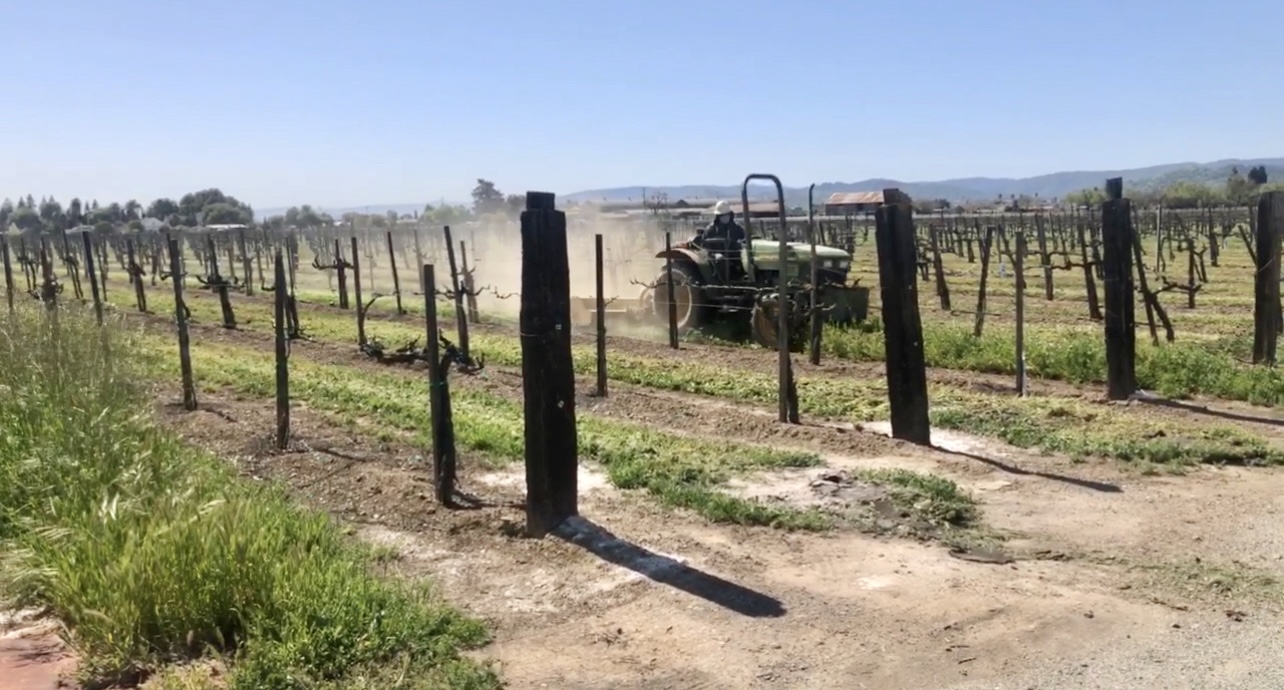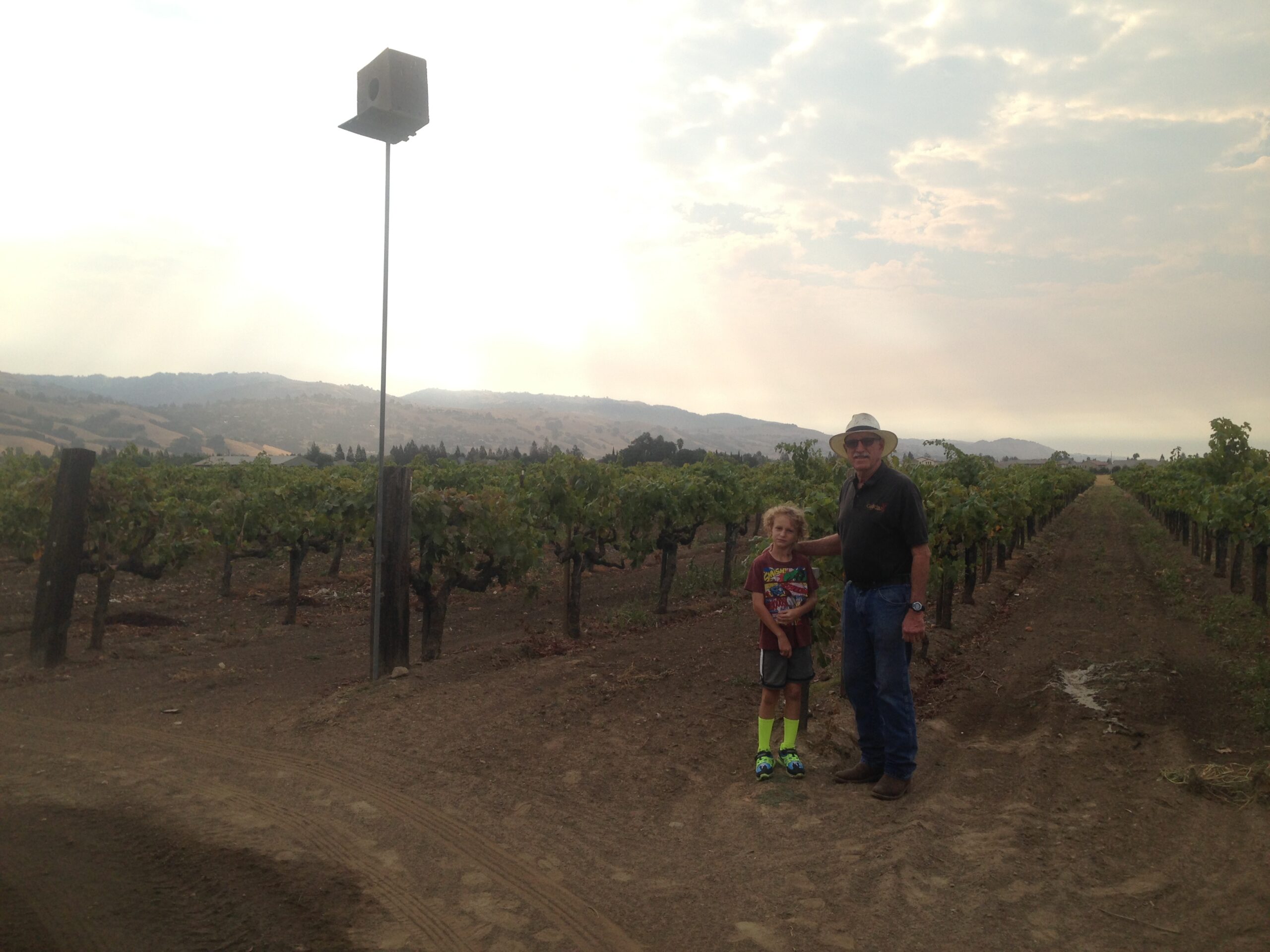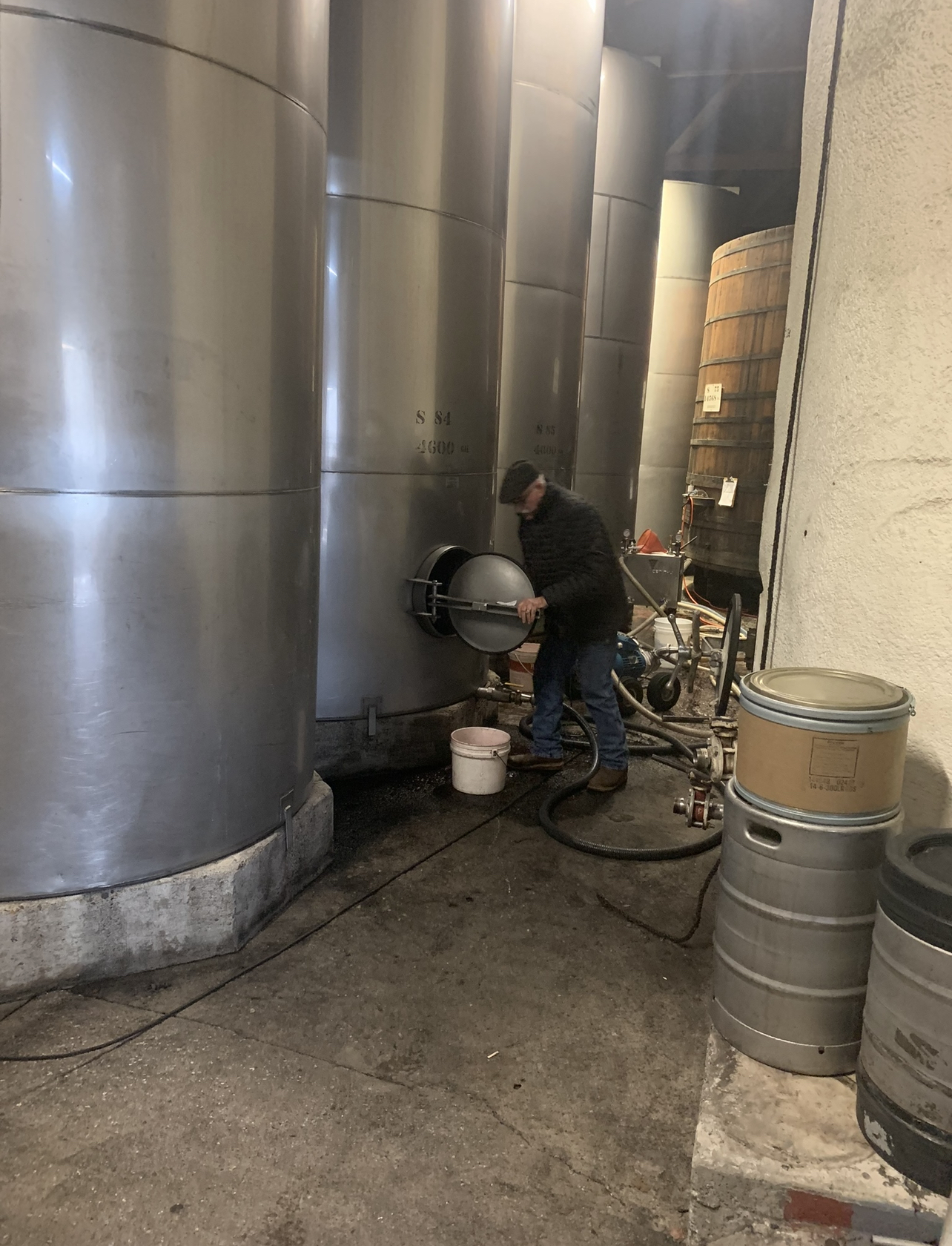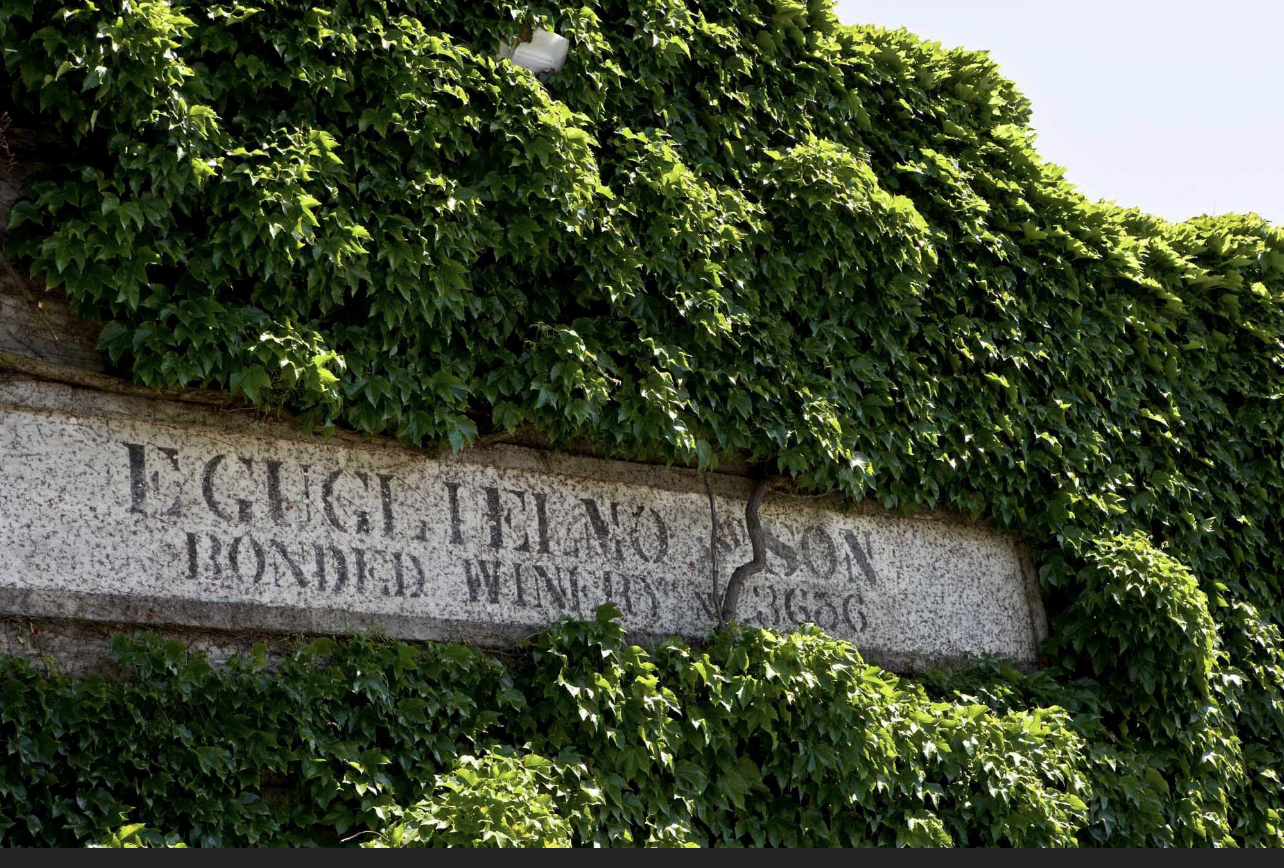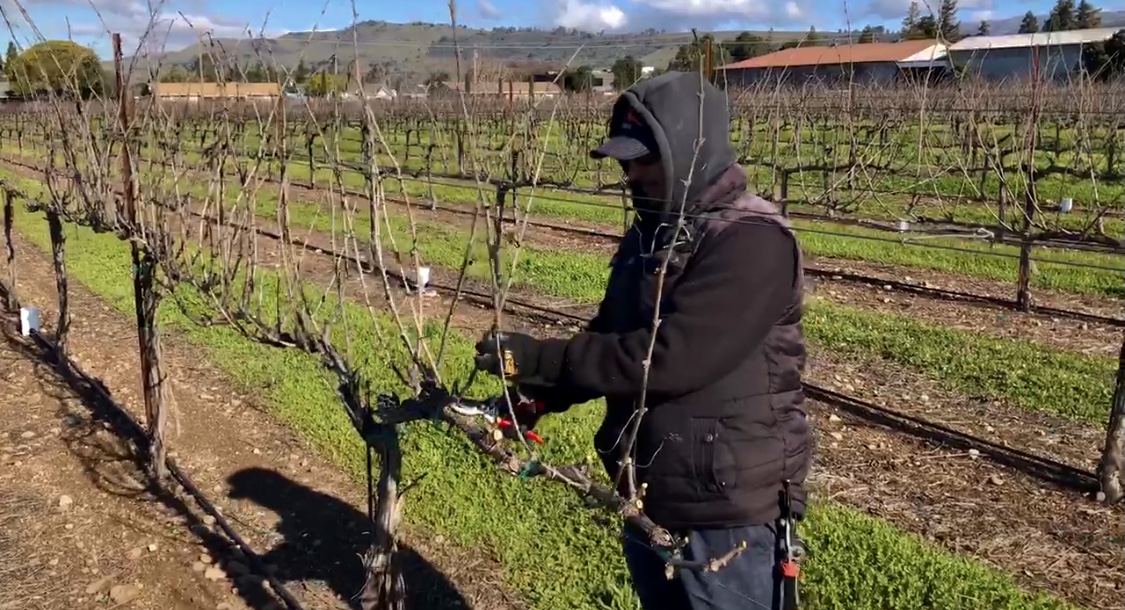Guglielmo Winery has a rich history of winemaking and vineyard management that scales nearly a century. In 1925, Emilio Guglielmo purchased the original 15-acre ranch. The ranch and vineyards have expanded and evolved over the decades into the 50-acre estate vineyard you see planted today. We strive toward being as sustainable as we can by limiting waste and repurposing resources and supplies in our winemaking practices, vineyard management, and day to day winery operations:
Vineyard Practices
- Water is life and must be utilized to promote healthy growth in vineyards. We dry farm most of the year (watering based on rain). Dry farming allows us to stress the vines and force them to dig deeper into the soil to search for water with the goal of building intensity within each berry leading to more complex wines. As the California drought continues, water will be necessary to promote healthy growth. A portion of our vineyard has drip irrigation installed, which allows for a more concentrated watering effort in the warmer ripening months of the growing season. Typically, we will water once a year which is sufficient for our established vineyard.
- All vine cuttings that result from pruning are broken down and slowly incorporated back into the soil
- Post-harvest and crush, we give right back to the vineyard by spreading the rachis and pumice as a natural source of nitrogen (soil nutrient) source for the soil.
- Natural pest control with owls, hawks, and falcons for rodent and snake control in the vineyard.
- Soft herbicides and fungicides (some are organic) are used to protect the vines. When using these protective herbicides and fungicides, we must consider and respect the community that surrounds us.

Winery Practices
- In the winery, we try to limit our water waste and use only when necessary.
- One person’s waste is another person’s “gold.” We collect the Lees from our tanks and barrels and send it off to be filtered and repurposed.
- We are registered with the California Certified Organic Farmers (CCOF) agency to bottle wines that are made from organic grapes.
- All wastewater that is generated from wine production is rerouted back into the vineyard.
- Tank insulation was applied to some of our key fermentation tanks to retain the cold temperatures necessary for healthy fermentations.
Winery Operations
- As a part of the PG&E Climate Smart program, we have been able to balance out more than 42 tons of greenhouse gas emissions. A portion of our effort to reduce the amount of greenhouse gas emissions produced includes the implementation of LED lights across the entire winery.
- We have also been with Silicon Valley Clean Energy since they started.
- The Boston Ivy that scales the walls of our buildings acts as natural insulation by absorbing the direct sunlight beaming down on the buildings. This insulation effect is crucial in regulating the cool temperatures of our cellar. In addition, we open the winery to let the cool morning air in and close the winery before the day begins to warm up.
- Winery packaging materials that we use have been made from recycled products. The packaging peanuts that we use are made from corn starch and dissolve when wet rather than typical foam material.
- Reduce, reuse, recycle! We do our part by recycling glass, paper, plastic, and corrugated boxes.
- Fun Fact: One weekend of ice buckets to chill wine for tastings and events can equate to 40-50 gallons of wastewater, which we collect and repurpose to water the vines over time.
At Guglielmo Winery, waste is not an option. If we were not sustainable in some capacity for nearly 100 years, we would not be here today to grow and produce high-quality grapes and wines for our customers to enjoy for generations to come! Thank you to all our wonderful customers for these last 97 years. We hope you enjoyed learning about Guglielmo Winery’s sustainability and we look forward to you visiting Guglielmo Winery very soon.
Written by Assistant Winemaker, Daniel Angelo


